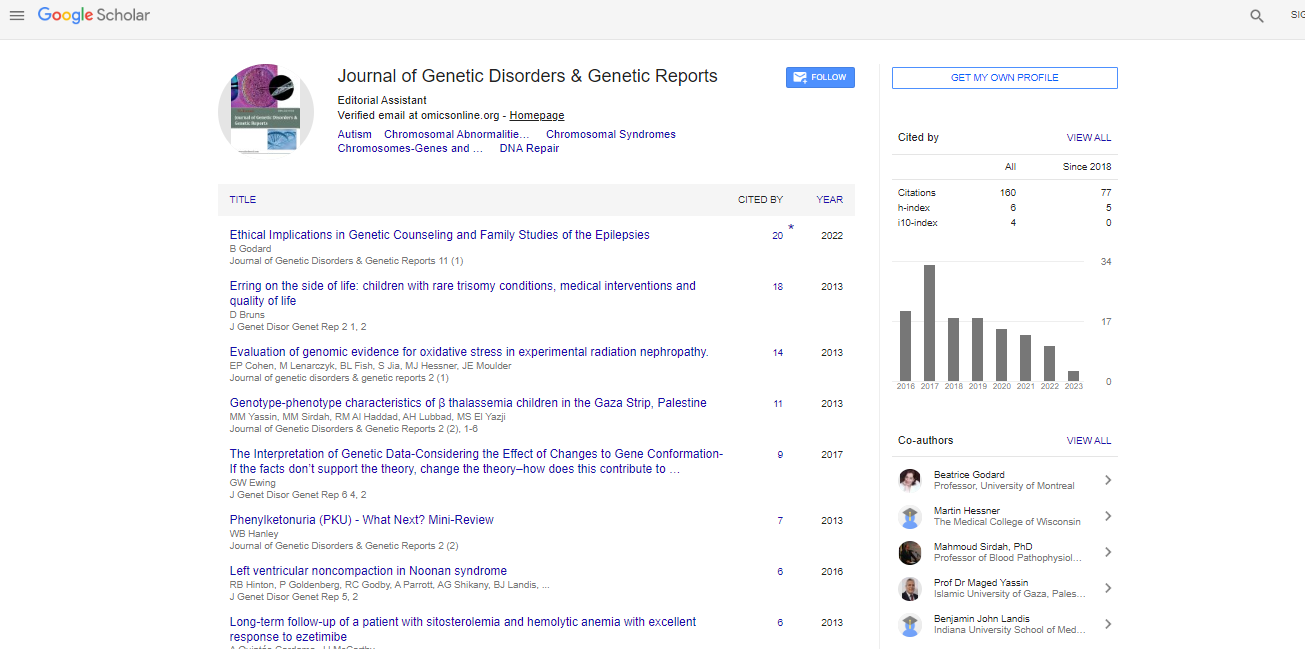Research Article, J Genet Disor Genet Rep Vol: 3 Issue: 1
Evidence that lithium Inhibits Export of N-Acetyl-L-Aspartate from Neurons: A Retrospective Study of Canavan Disease and Bipolar Disorder Patients
| Morris H Baslow* and David N Guilfoyle |
| Nathan S Kline Institute for Psychiatric Research, 140 Old Orangeburg Road, Orangeburg, NY 10962, USA |
| Corresponding author : Morris H Baslow Nathan S Kline Institute for Psychiatric Research, 140 Old Orangeburg Road, Orangeburg, NY 10962, USA Tel: +1-845-398-5471; Fax: +1-845-398-5472 E-mail: baslow@nki.rfmh.org |
| Received: November 22, 2013 Accepted: December 26, 2013 Published: January 03, 2014 |
| Citation: Baslow MH, Guilfoyle DN (2014) Evidence that lithium Inhibits Export of N-Acetyl-L-Aspartate from Neurons: A Retrospective Study of Canavan Disease and Bipolar Disorder Patients. J Genet Disor Genet Rep 3:1. doi:10.4172/2327-5790.1000110 |
Abstract
Evidence that lithium Inhibits Export of N-Acetyl-L-Aspartate from Neurons: A Retrospective Study of Canavan Disease and Bipolar Disorder Patients
Lithium (Li) is an effective treatment for human bipolar disorder (BD) but whose precise mechanism and site of action are unknown. N-acetyl-L-aspartic acid (NAA) is an amino acid synthesized by and maintained at high steady-state levels within neurons from where it is exported to extracellular fluid (ECF) upon depolarization. NAA is the only precursor for N-acetylaspartylglutamate (NAAG), a neurotransmitter synthesized by neurons and also exported to ECF upon depolarization. The physiological function of NAA is as yet unclear but its unique tri-cellular metabolism between neurons, oligodendrocytes (NAA) and astrocytes (NAAG) is vital for normal brain function. Canavan disease (CD) is a rare inborn error in metabolism of NAA where oligodendrocyte aspartoacylase (ASPA) is inactive and NAA cannot be hydrolyzed resulting in its buildup in brain ECF and excretion in urine.
 Spanish
Spanish  Chinese
Chinese  Russian
Russian  German
German  French
French  Japanese
Japanese  Portuguese
Portuguese  Hindi
Hindi 



